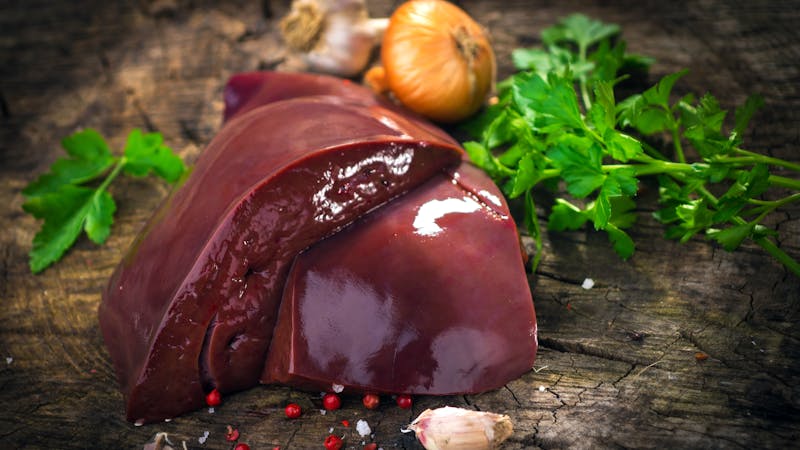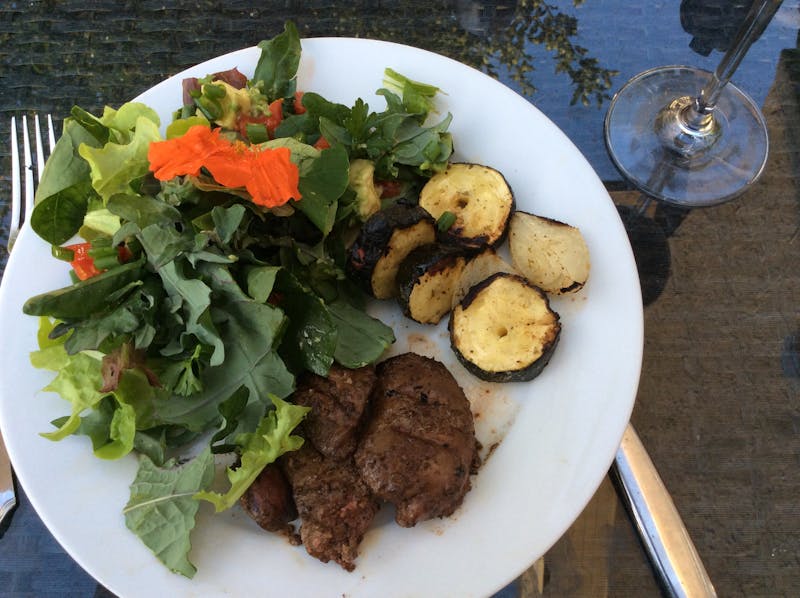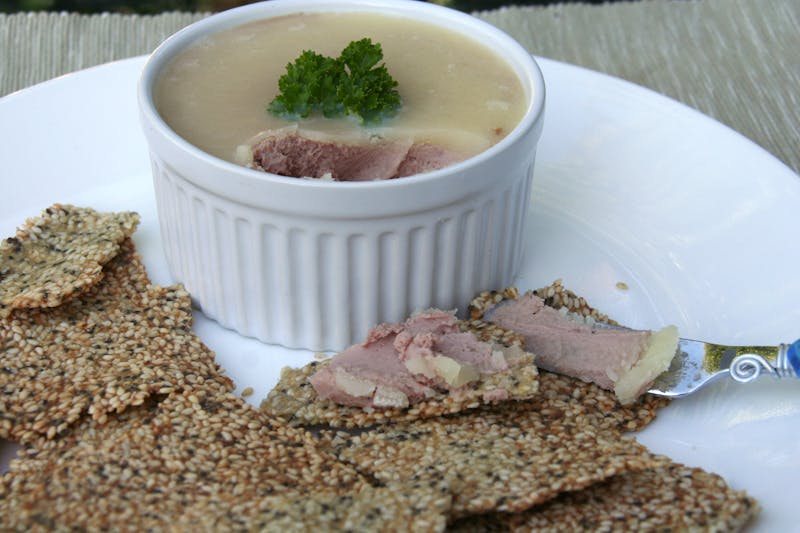In praise of liver: falling in love with a widely reviled food

Do you love liver? If you are like almost 50% of Anglo-Western populations, the answer is likely no.
In fact, surveys in some countries — UK, US, Canada — regularly find that liver is always among the top five most hated foods, often taking the #1 spot.
To me, that’s a shame because various types of liver— beef liver, lamb liver, chicken liver in particular — are an inexpensive, tasty, nutritious food that is great on the low carb keto diet.
Many people could be missing out on a powerful addition to their LCHF way of eating because of some preconceived notions or ancient aversions.
So this post is an ode to liver. I’m hoping that by sharing my love of it — along with its nutritional superpowers, a few tips on what to buy, how to prepare it, and some no-fail, simple ways to cook it — some Diet Doctor readers may develop an appreciation, too. (Of course in some cultures, like Germany, Italy and France —especially around Lyon —liver and other offal is adored.)
But let’s deal with the widespread Anglo-American aversions first.
Aversion on principle or from past experiences?
Many people dislike liver on theory alone. If they are under 45, they may never have even tasted a dish like liver and onions.
It’s the idea of touching, cooking and eating a quivery, jelly-like, bloody organ meat that filters toxins that is so repellent. “It’s just disgusting,” said a young friend, who is on the keto diet. “I know I should eat liver, but I can’t get myself to cook it, let alone eat it,” she said, confessing that she had never knowingly tasted it — except pâté. It was the thought alone that disgusted her.For some, the hatred of liver dates back to childhood, especially among those over the age of 50 who were served it regularly prior to the 1970s. Liver was a staple in many family homes and frequently found on the menus of mom & pop diners. My mother served calf or chicken livers every few weeks when I was growing up in the 1960s and early 1970s.
With its strong sometimes metallic flavor, grainy texture and the fact that many moms over-cooked it until it was rubbery and then served it with onions — another food many kids hate — liver became widely reviled. It was the sort of food that my friends recall slyly spitting into a napkin or slipping to the family dog.
It was also the sort of food that some authoritarian parents demanded their kids stay at the table to eat until they finished it, or else some form of punishment ensued. One girlfriend, now in her 60s, recalls standoffs with her disciplinarian father over liver that now has turned her off it for life. “I just can’t stomach it because I associate it with a form of rigid authoritarian parenting that damaged so many of us. Liver in our house meant fights with my father and someone, usually me, being spanked.”
Bonding over liver
I loved liver as a child, which was a bit odd because I was otherwise a fussy eater. Squash, turnip, beets, cooked spinach, Brussels sprouts and mashed potatoes would make me gag, but liver I would lap up. My mom was always a great cook, and her liver was never rubbery or over-done. To me it was a form of comfort food — on a cold Canadian winter night, a dinner of liver, bacon and onions would satisfy me from head to toe.
When my husband and I first met in the 1980s, one unusual bond we shared was our mutual love of liver as children — everyone we knew couldn’t stand the stuff.
My mother stopped serving liver regularly in the mid 1970s, largely because it was high in cholesterol and fat and, in the start of the ill-conceived low fat era, health authorities were admonishing people to reduce dietary sources of cholesterol and fat for our health. She heeded that wrong-headed advice. Concerns were also raised, with the rise of factory farming and the feeding of antibiotics and hormones to livestock, that liver could concentrate those chemicals. That concern is not misplaced, and I make a point to this day of not eating liver from CAFOs – confined animal feeding operations.
Despite my love of liver, I rarely if ever ate it for decades, up until this past year. In the third year of my keto diet, I was looking for some more good sources of high quality, nutritious meat protein for a good price — so liver came back into my life again.
While I never see it for sale in the large grocery stores —and would not buy it there anyway because of the connections to CAFO meat — our small local butcher, which specializes in products from local farms using humane, regenerative agriculture, always has loads of options, at very good prices. In its freezer case, a 275 gram (0.6 pounds) package of organic chicken livers is about $4 —enough to feed my husband and me, with leftovers for my lunch. The butcher is right on my walk home from my office so I pick up liver to make for dinner at least every two weeks.
Liver’s super powers
In fact, liver is a keto super food. Gram for gram, it is one of the most nutritious foods on the planet. Here are some of liver’s super powers:
- It a fabulous source of protein; 100 grams of chicken liver has 26 grams of protein; 100 grams of beef liver has 29 grams of protein.
- It contains all the B vitamins, and is particularly rich in B12, an essential vitamin for functioning of every cell in the body — that can only be obtained naturally through animal foods. Liver has levels ten times higher or more than other common sources.
- It is a terrific source of folate (Vitamin B9), which is also essential for key cellular processes – and especially essential for women in the reproductive years.
- It is the highest source of Vitamin A of any food — which is needed for healthy eyes, skin, teeth, bones, immune system, cellular functions.(Too much Vitamin A can be toxic, so it means you cannot eat liver every day, if you do happen to love it).
- It is a fabulous source of key minerals that are all essential to healthy body process, especially iron, selenium, chromium, phosphorus, and copper.
With all these attributes, it is no wonder that liver and other organ meats have been so prized by cultures like the Inuit of Northern Canada and Sami of Northern Scandinavia. Animals seem to naturally know its benefits. Predatory animals, like lions, wolves and other carnivores usually open’s their prey’s abdomen to eat the organs — especially liver —first.
Top tips to help get past the aversions
If you have never cooked with liver, here are my tips for great outcomes. (Youtube also has lots of videos for liver preparation and recipes from all around the world.)
- Start with chicken livers – they are the easiest to handle and have the mildest taste. Once you love chicken livers, branch out to other kinds
- If the consistency of liver makes it hard for you to prepare, work with it when it is still slightly frozen, or place it in a bath of ice and water so it is chilled.
- With a sharp knife, remove the connective tissue between the two lobes of chicken livers. Here is a good video demonstrating how to clean chicken livers.
- Some, like my mother, always marinate liver first in milk. I find a better marinade is a vinaigrette made of equal parts of olive oil, apple cider vinegar and Dijon mustard. An acid like lemon juice or vinegar softens or removes liver’s metallic taste that many dislike.
- Making pâté is often a very rewarding way to first try liver. As my daughter says “pâté is eating liver without noticing you are eating liver!”
- While there are lots of complicated recipes that include raw eggs and oven water baths, it doesn’t need to be complicated for good results. Diet Doctor has an excellent, easy pâté recipe.
- I make a simple paté by mincing half an onion and a clove of garlic, sautéing them in butter until soft in a frying pain. Then I add water to the pan, a bay leaf, herbs de Provence and the cleaned chicken livers, poaching them until they are still slightly pink in the center. I then transfer with a slotted spoon the liver and minced onions to a food processor, add some melted butter, a dash of cognac or brandy and a splash of whipping cream (enough so that when processed it is creamy and smooth.) I spoon it out into ramekins and top with melted butter. It lasts for a week in the fridge and freezes well for a couple of months.
- In summer, we love grilled chicken livers on the barbecue. We marinate the clean chicken livers in the vinaigrette for 8 to 24 hours, put them on skewers and grill. I often grill cherry tomatoes and onions, too, then serve with a simple salad. Delicious. Another delicious way to grill is to simply wrap chicken livers in bacon, put on a skewer and grill.
- If you want the nutrition but want to hide the taste or texture, chop liver into tiny pieces and add to ground beef for hamburgers, Bolognese sauce, stews, or tacos.
- Liver and onions is a classic dish. I start by frying four of five slices of bacon, setting them aside when done and removing some of the fat. Then I sautée slices from a whole onion until tender, then add in the cleaned liver, cooking until just a bit pink. At the end, I pour in about ¼ cup of whipping cream to de-glaze the pan and make a nice rich, flavourful gravy. I served with the bacon, a green vegetable or salad, and sautéed herbed tomatoes (done in a separate skillet), which makes make a perfect replacement for ketchup that many of us used to slather on liver.
Are you willing to try adding liver to your keto diet? What are your favorite recipes? If you got over an aversion, how did you do it? Share your tips and tricks below.
More
Earlier
All earlier posts by Anne Mullens





































